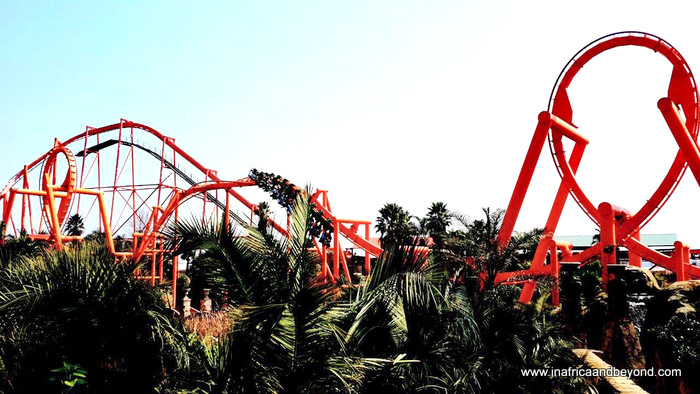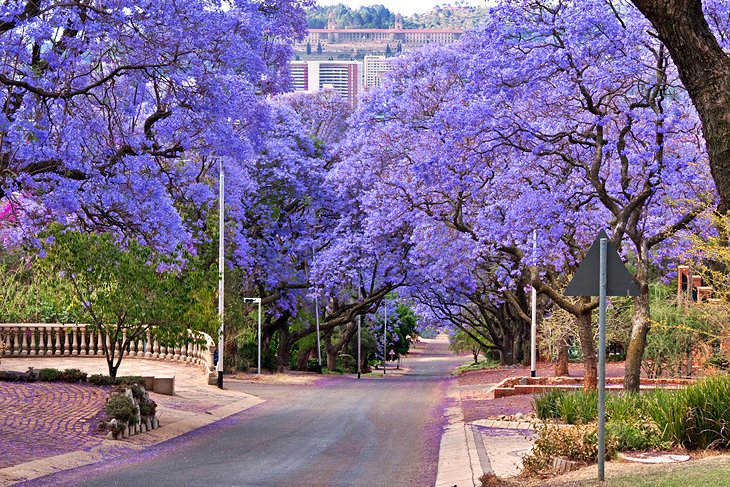Unknown Facts About Johannesburg North Attractions
Table of ContentsNot known Details About Johannesburg North Attractions Things about Johannesburg North AttractionsJohannesburg North Attractions Things To Know Before You BuyRumored Buzz on Johannesburg North AttractionsThe 3-Minute Rule for Johannesburg North AttractionsThe Main Principles Of Johannesburg North Attractions
The city grew on the side of the Witwatersrand Key Reef, a subterranean stratum of gold-bearing quartz-silica corporation that arcs for hundreds of miles underneath the Highveld - Johannesburg North attractions. Many of the gold mines in the city stopped procedure in the 1970s, however in its day the Witwatersrand gold market accounted for even more than 40 percent of the world's yearly gold production.Johannesburg has a temperate environment. Summer temperatures average regarding 75 F (24 C); winter season temperatures balance about 55 F (13 C) and just sometimes dip below freezing. The city delights in concerning eight hours of sunshine each day in both winter months and summertime. Rain averages concerning 28 inches (700 millimetres) per annum, however the complete varies significantly from year to year.
What rain the city obtains falls nearly specifically in the summertime, typically in stunning late-afternoon electrical tornados. Air pollution positions a significant issue, specifically in the cold weather, when thermal inversions impede the westward flow of air from the Indian Sea. Pollution is most extreme in the largely cleared up Black municipalities on the city's periphery, where numerous homeowners still count on coal for gas.

Not known Facts About Johannesburg North Attractions
The equilibrium of the city is inhabited by whites. Lodging differs in personality and quality.
Physical development, although rather limited by transportation, proceeded rapidly as migration to South Africa, and Johannesburg in particular, increased dramatically.
Most poor residential areas were blended, with bad blacks and whites living with each other, although the well-off residential areas were generally booked for whites. This transformed with the political election of the National Celebration in the 1948 political elections, that began to formalise the system referred to as apartheid. Apartheid formally marked which suburban areas each race can live in under the Group Areas Act.
The previous system of eleven phoned number regions was reorganised in 2006. Marshalltown, as seen from the top of the Carlton Centre. The M1 and M2 run behind the structures, and the southerly suburbs expand past the highway boundary. The inner city of Johannesburg is situated within the city's Region F. The number of individuals living in the internal city on a casual basis is unknown, as many are unlawful immigrants. The joblessness, education, and age profiles of the area are all unidentified, due to the problem of obtaining reliable information regarding the location.
The smart Trick of Johannesburg North Attractions That Nobody is Talking About
Centred on the CBD, the area includes the suburban areas of Yeoville, Bellevue, Troyeville, Jeppestown, and Berea to the east. To the west it spreads to Pageview (Johannesburg North attractions) and Fordsburg. There are tiny industrial parks to the south, such as City West-Denver and Benrose. Around 800,000 commuters go through the central city on a daily basis, and it works as a local buying node for visitors from the southerly suburbs. Yeoville and Bellevue have a mix of home structures and single household browse around this web-site systems on tiny lots. The area lies on a mountainous divide that ranges from east to west. The most obvious geographic function about his is Observatory Ridge, which is named for the huge observatory situated on it. The leisure rooms are no more used, due to protection troubles.

Johannesburg Stadium, a training school for both the Golden Lions and Orlando Pirates, is nearby. The eastern residential areas of Johannesburg are located in the city's 7th [] and 9th [] areas. The area is likewise functionally incorporated with East Rand boundary towns outside of the official border of Johannesburg, such as Bedfordview and Edenvale (both part of Ekurhuleni Metropolitan Community).
A Biased View of Johannesburg North Attractions
The eastern suburbs are some of the oldest locations of Johannesburg, there are large communities of Jewish and various other European histories, the majority of the populace is English speaking. There are 3 golf programs as well as a number of safeguarded ridges with viewsites.
The area is mainly composed of old "matchbox" residences, or four-room residences developed by the federal government, that were constructed to give cheap holiday accommodation for black workers throughout apartheid. Soweto is an acronym, meaning "South Western Townships". Road after street around is straight from the source lined with matchboxes; nonetheless, there are a couple of smaller sized locations where thriving Sowetans have constructed homes that are a lot more comparable in stature with those in even more upscale suburban areas.
Hostels are an additional prominent physical attribute of Soweto. Initially built to house male migrant employees, lots of have been boosted as residences for couples and family members. The N1 Western Bypass skirts the eastern limit of Soweto. The residential area was not historically permitted to produce employment centres within the area, so mostly all of its homeowners are travelers to other components of the city.
Everything about Johannesburg North Attractions
The N1 Western Bypass connects the northern residential areas with the north-western suburbs. The houses in the north suburban areas are mostly formal, without significant areas of casual real estate, or real estate that lacks a permanent structure. This is a well established location, there is a fad of land usage modification from household to business, especially along primary arterial roads and around established nodes.
The area is well connected to roadway networks, especially along the north-south axis formed by the M1 and N1. Roadways to the east and west are much less well created, as there are no highways taking a trip in that instructions. In the direction of the north border of the city, the thickness of development reduces, leaving huge locations of undeveloped land around Midrand.
Johannesburg North Attractions Can Be Fun For Anyone
The initial suburban area to the north of the central city is Parktown, which lies on a hill overlooking the central city and Hillbrow. It has lots of rich residents and Edwardian-design mansions, along with the Education and learning and Clinical campuses of the University of the Witwatersrand. The big concrete Charlotte Maxeke Johannesburg Academic Hospital dominates the skyline of Parktown.